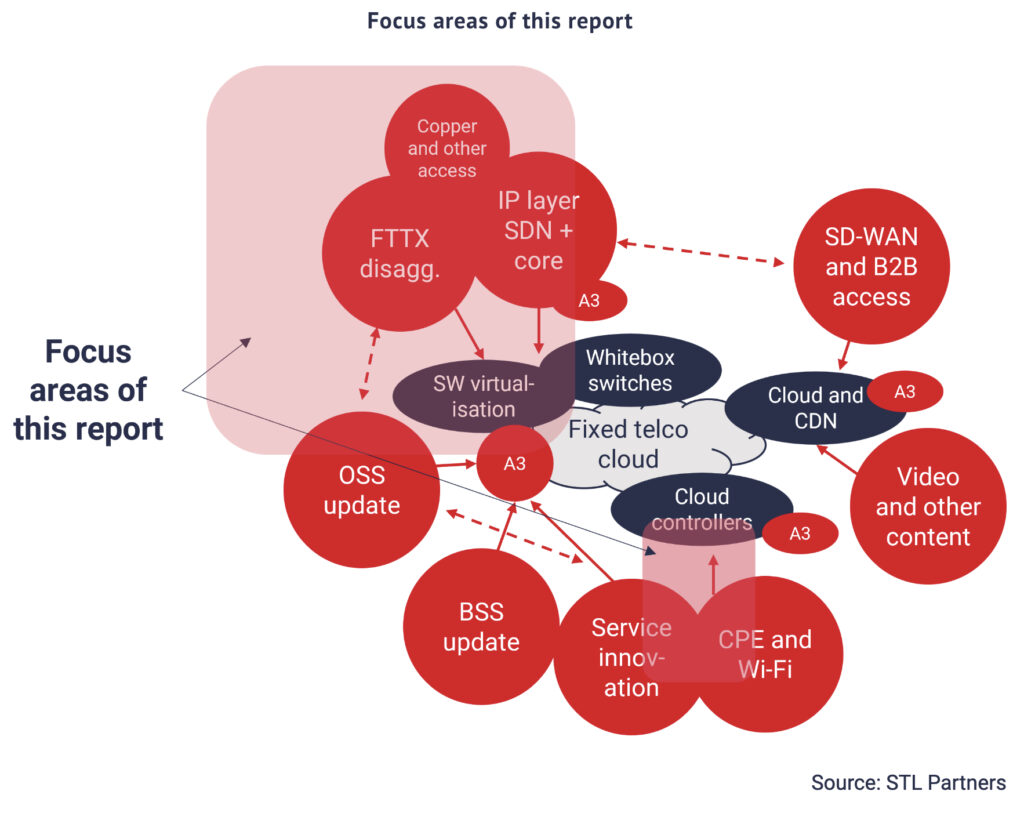STL Partners’ report finds fixed has very different drivers to the mobile world and telco cloud is much less of ‘a thing’
Virtualisation, disaggregation and multivendor solutions are increasingly finding favour in the fixed access network, according to a new report from STL Partners. However, in the fixed arena, the outcome is “a recombining of network elements, rather than softwarisation of network functions”.
STL continues, “Fixed operators envisage network disaggregation as a means to decrease deployment and operational costs, remove vendor lock-in, and combine residential, business and other type of access into a single infrastructure. This report examines progress so far and learnings from early movers.”
Network operators are looking at network disaggregation as way to reduce deployment and operational costs, escape vendor lock-in and pull residential, enterprise and other kinds of access into one infrastructure.
The table above shows the importance attached to different parts of the network by the various categories of service providers.

It is an implicit recognition of the diversity of the fixed broadband market in terms of scale, different usage sectors and the technologies deployed in the last mile.
STL explains, “The importance of physical wires, switches, local exchanges/central offices, and IP and optical hardware (and human engineers) in fixed access tends to mean more emphasis on disaggregation of large boxes into smaller ones, or into hardware and virtualised software elements, primarily for control. Cloud is, to an extent, a secondary or next-horizon goal in the access network.”

BSS, network transport and the IP core are not much in the current disaggregation picture. Customer premises equipment and OSS are covered by the report, but automation is treated as a separate topic for now.
A big difference (apart from the obvious) between mobile and fixed access is that the concept to telco cloud is less prevalent. STL says, “This conundrum was one of the main catalysts for this report: Why the different emphasis? Is it about architectural differences, underlying problems and cost structures to fix, or simply semantics?”
It concludes that although these issues are important, timing and coordination are critical factors too. Whereas mobile has several large-scale changes underway which are propelling it towards cloud-native capabilities and cloud-orientated software architectures simultaneously. Those changes include the move to 5G Standalone (5GSA), evolution of the RAN, edge compute, APIs and the exposure of capabilities, and the modernisation of BSS to support digital interactions online and via apps with customers.
STL argues that overall, there is a common, broad concept and trajectory of travel in mobile but does not exist in the fixed world. There is no evolutionary force such as the shift to 5G SA to push fixed towards major cloud-native adoption. Here disaggregation is more about hardware issues and virtualisation is more a means to an end rather than an end in itself.



